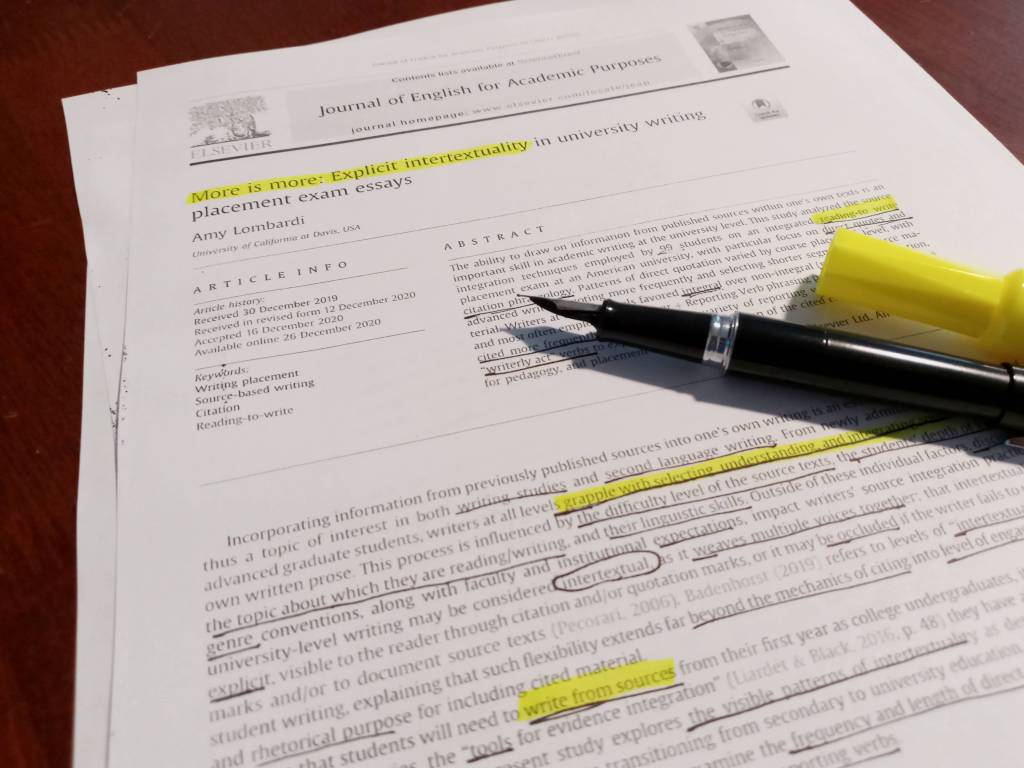
“We need to learn to listen and read and interpret messages more thoughtfully,” Amy Lombardi told me. A doctoral student at the University of California at Davis, Lombardi says such skills are “undervalued and need to be taught more.” In our conversation recorded below, we talk about Lombardi’s recent article “More Is More: Explicit Intertextuality in University Writing Placement Exam Essays.” This study is an admittedly hyper-specific examination—looking at a corpus of exam essays written by incoming college students to see how they cite sources, including the phrasing (how many times do they say “says” vs. “believes” vs. “opposed”?) and punctuation (does all the mention of the sources get crammed into parentheses or are the sources actually named and discussed in the writing?). But in this very specific focus, this is still a study with bearing on a much broader topic: “receptive skills.” The phrases and punctuation that students use (or do not use) to cite sources are “the techniques they’re using to signal to the reader overtly that they’re bringing in information from other sources.” Looking at how students cite is thus a perfect site for examining larger skills such as “reading as a listener” and “listening to the text.” Isn’t writing often referred to as a conversation? Well, Lombardi notes, “these [details of citation] to me are the elements of that conversation.”
